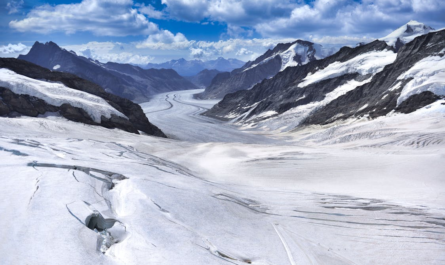Mount Rigi, often referred to as the Queen of the Mountains has long been a symbol of Swiss natural beauty and tourism. Towering at 1,798 meters above sea level and offering scenic views of the Alps, Lake Lucerne, and Lake Zug, Mount Rigi became a focal point for early Swiss tourism. During the 19th and early 20th centuries, postcards and tourism advertisements played a crucial role in promoting Rigi as a must-visit destination. These visual and textual narratives not only helped establish Switzerland as a tourist haven but also shaped the global perception of alpine beauty.
This article explores the historical significance of Mount Rigi in early Swiss postcards and tourism advertisements, examining how these mediums contributed to its status as a premier travel destination.
The Rise of Swiss Tourism and the Role of Mount Rigi
1. Early Tourism Boom in Switzerland
The advent of tourism in Switzerland dates back to the late 18th and early 19th centuries when European aristocrats and scholars traveled to the Alps for leisure, health benefits, and inspiration. The rise of Romanticism in art and literature, which idealized nature and the sublime, further fueled interest in the Swiss landscape.
One of the first major milestones to gain international attention was Mount Rigi. Its accessibility, due to its relatively moderate height and the early development of transport routes, made it a popular choice for travelers. By the mid-19th century, with the construction of the Vitznau-Rigi Railway in 1871—the first mountain railway in Europe Mount Rigi became one of Switzerland’s earliest mass tourism destinations.
2. The Role of Postcards in Promoting Mount Rigi
A. Evolution of Swiss Postcards
Postcards emerged as a significant form of communication and tourism promotion in the late 19th century. In Switzerland, scenic postcards quickly became a favorite souvenir for travelers, as they provided a tangible way to share the magnificence of the Alps with friends and family abroad.
Mount Rigi featured prominently in Swiss postcards for several reasons:
- Panoramic Views: The mountain’s unique position allowed for breathtaking, unobstructed views of lakes, valleys, and surrounding peaks.
- Romanticized Imagery: Early postcards often depicted Rigi at sunrise or sunset, emphasizing its ethereal beauty.
- Historical Significance: Many postcards highlighted Rigi’s association with notable figures such as Mark Twain, who wrote about his ascent of the mountain.
B. Iconic Postcard Imagery
Postcards from the late 19th and early 20th centuries represented Mount Rigi in various artistic styles, from hand-tinted lithographs to black-and-white photographs. Some of the most famous postcard themes included:
- Railway Ascents: Many postcards showcased the Vitznau-Rigi Railway winding through picturesque landscapes.
- Winter Wonderland Scenes: Snow-covered views of Mount Rigi promoted it as a year-round destination.
- Hotels and Spas: Grand hotels such as the Rigi Kulm Hotel frequently appeared in postcards, inviting travelers to experience luxury in the Alps.
The Role of Tourism Advertisements in Rigi’s Popularity
1. Early Swiss Tourism Campaigns
Swiss tourism organizations and railway companies launched extensive advertising campaigns to attract international visitors. Advertisements appeared in newspapers, travel magazines, and promotional brochures across Europe and North America. These materials often emphasized the ease of travel to Mount Rigi, thanks to Switzerland’s efficient railway system.
2. Artistic Influence in Tourism Ads
Early tourism advertisements featured elaborate illustrations and poetic descriptions, often romanticizing Mount Rigi as a place of peace, adventure, and rejuvenation.
Many advertisements highlighted the breathtaking sunrise on Rigi, portraying it as a spiritual and awe-inspiring experience. The view from Rigi Kulm, where the first rays of sunlight illuminated the surrounding Alps and lakes, became a key selling point in tourism promotions. Travelers were encouraged to witness this serene spectacle, which was often described as a once-in-a-lifetime moment of tranquility and beauty. Additionally, Mount Rigi was marketed as the most accessible Alpine summit, making it an ideal destination for casual travelers and families. Unlike more challenging peaks, Rigi offered a convenient railway connection and well-maintained hiking trails, allowing visitors of all ages to experience the Swiss Alps without extensive mountaineering expertise. Beyond its scenic charm, Rigi also gained popularity as a health and wellness retreat, attracting tourists seeking fresh mountain air and natural healing. Many ads emphasized its benefits for respiratory health, promoting the region as a sanctuary for those in need of relaxation and rejuvenation. This combination of accessibility, natural splendor, and wellness appeal cemented Mount Rigi’s reputation as a premier travel destination in early Swiss tourism.
3. Impact on International Tourism
These advertising efforts significantly boosted Mount Rigi’s popularity among European and American tourists. By the early 20th century, Rigi had become a household name, often mentioned alongside Jungfrau and Matterhorn in travel literature. The increasing number of visitors led to the expansion of hotel infrastructure and transportation facilities, further solidifying Rigi’s place in Swiss tourism history.
Decline and Modern Revival of Rigi’s Tourism Image
1. Decline in Popularity
With the rise of air travel and the expansion of global tourism in the mid-20th century, many traditional Swiss mountain destinations, including Mount Rigi, saw a decline in international visitors. The emergence of more dramatic Alpine peaks like the Matterhorn and Eiger overshadowed Rigi’s appeal.
2. Digital Revival and Nostalgia Marketing
In recent years, interest in Mount Rigi has been rekindled, thanks to digital marketing and nostalgia-driven campaigns. Vintage-style postcards and social media promotions have brought renewed attention to Rigi’s historical significance. Tourism boards have leveraged the classic imagery of early postcards and advertisements to attract modern travelers seeking a blend of history, nature, and relaxation.
Mount Rigi played a pivotal role in the development of Swiss tourism, largely due to the influence of early postcards and tourism advertisements. These visual and textual promotions not only helped shape the global image of Switzerland as a travel destination but also established Rigi as an iconic alpine retreat. While its popularity may have fluctuated over time, Mount Rigi continues to hold a special place in the heart of Swiss tourism, thanks to its breathtaking scenery and rich historical legacy.
Today, as digital storytelling and vintage aesthetics regain prominence, Mount Rigi’s role in early Swiss postcards and tourism advertisements serves as a testament to the enduring power of visual media in shaping travel perceptions. For those looking to explore Swiss history and nature, Rigi remains an eternal destination that beautifully bridges the past and present.



